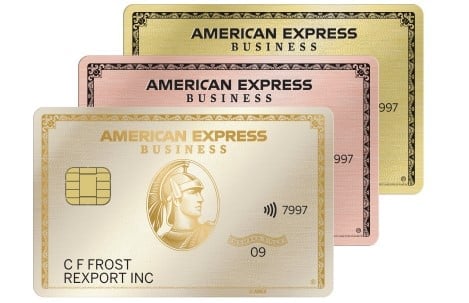
Many, or all, of the products featured on this page are from our advertising partners who compensate us when you take certain actions on our website or click to take an action on their website. However, this does not influence our evaluations. Our opinions are our own. Here is a list of our partners and here's how we make money.
SBA loans are business loans partially guaranteed by the U.S. Small Business Administration and issued by participating lenders, usually banks. These loans have tight lending standards, but if you can qualify for an SBA loan, their flexible terms and low interest rates can make them one of the best small-business loans.
Here’s an overview of how SBA loans work, the types of SBA loans that are available, what each loan type can be used for and how to get SBA financing for your small business.
» MORE: Compare the best SBA lenders
How much do you need?
We’ll start with a brief questionnaire to better understand the unique needs of your business.
Once we uncover your personalized matches, our team will consult you on the process moving forward.
What is an SBA loan?
An SBA loan is a small-business loan that can help cover startup costs, working capital needs, expansions, real estate purchases and more. This type of financing is issued by a private lender but backed by the federal government, specifically the Small Business Administration.
More than $12 billion in SBA 7(a) lending has been approved so far in the 2025 fiscal year (which started on Oct. 1, 2024).
How do SBA loans work?
You apply for an SBA loan through a lending institution like a bank or credit union. That lender then applies to the SBA for a loan guarantee, which means if you default on an SBA loan, the government pays the lender the guaranteed amount.
The SBA requires an unconditional personal guarantee from everyone with at least 20% ownership in a company. This guarantee puts you and your personal assets on the hook for payments if your business can't make them.
Both the government guarantee and the personal guarantee reduce the risk for lenders — making them more willing to work with small businesses.
Once you’re approved for an SBA loan, your lender is responsible for closing the loan and disbursing the loan proceeds. You repay the lender directly, usually on a monthly basis.
Types of SBA loans
There are several government small-business loan options available — each with its own terms and conditions. The best SBA loan for you will depend on what you plan to use the funding for.
Here’s a summary of the most common types of SBA loans.
Program | Loan size | Purpose |
|---|---|---|
Up to $5 million. | Working capital, expansion and equipment purchases. | |
Up to $500,000. | Fast funding for working capital, expansion and real estate and equipment purchases. | |
Up to $5 million (up to $5.5 million for select projects). | Purchase long-term, fixed assets like land, machinery and facilities. | |
Up to $50,000. | Working capital, inventory, supplies, equipment and machinery. | |
Up to $2 million. | Repair physical damage due to a declared disaster and cover operating expenses. | |
Up to $5 million. | Flexible working capital line of credit to support a wide variety of small-business needs. | |
SBA Export Working Capital loans | Up to $5 million. | Working capital to support export sales. |
SBA Export Express loans | Up to $500,000. | Expedited funding to enhance a business’s export development. |
SBA International Trade loans | Up to $5 million. | Long-term funding to expand export sales or modernize to contend with foreign competitors. |
The SBA also offers lines of credit, real estate loans and business acquisition loans.
» MORE: Can you have multiple SBA loans?
Pros of SBA loans
Competitive rates
Per federal rules, participating lenders base SBA loan interest rates on the prime rate plus a markup rate known as the spread.
Note that the annual percentage rate on a loan is different from the interest rate. The APR is a percentage that includes all loan fees in addition to the interest rate.
APRs can vary substantially between SBA lenders and non-SBA lenders. For example, an online lender that specializes in SBA loans may cap its variable APR around 14%, while major online small-business lenders that don't offer SBA loans have loans with APRs as high as 99%.
You can use NerdWallet’s SBA loan calculator to estimate your monthly payments and find out how much you’ll spend on interest based on different rates.
Low fees
Fees for SBA loans usually consist of an upfront guarantee fee, based on the loan amount and the maturity of the loan, and a yearly service fee — based on the guaranteed portion of the outstanding balance. The SBA reassesses its fee structure each year.
There are no upfront guarantee fees for SBA 7(a) loans of $1 million or less through September 2025.
And there are no upfront guarantee fees on SBA Express loans to any veteran-owned businesses.
Longer terms
Another perk of SBA loans is that you get more time to repay them, which means you’ll have more money available for other business needs. The loan term will depend on how you plan to use the money. The current maximum maturities are:
Working capital or inventory loan: 10 years.
Equipment: 10 years.
Real estate: 25 years.
Large loan amounts
Although the amount of funding you receive will vary based on the type of SBA loan and your business’s qualifications, SBA loans generally offer large loan maximums.
7(a) loans, for example, offer a maximum loan amount of $5 million. Similarly, the 504/CDC program offers a maximum loan amount of $5 million, but provides up to $5.5 million for small manufacturers and eligible energy public policy projects.
These are much larger loan amounts than are typically offered by online lenders or even banks — who generally max out at $500,000 and $1 million, respectively.
Cons of SBA loans
Hard to qualify
Although the government guarantee reduces the risk that lenders face when issuing loans to small businesses, you’ll still need to meet strict eligibility criteria to get an SBA loan. Typically, you’ll need several years in business, strong business finances and a good credit score to qualify.
Slow to fund
Depending on your lender and the type of SBA loan you apply for, it can take anywhere from one to three months to access funds. Plus, the SBA loan application process is detailed and requires extensive documentation.
❗If you need capital quickly, you’ll want to consider a faster small-business loan alternative.
Require some form of collateral
SBA loans typically require an unlimited personal guarantee from anyone who owns 20% or more of the business. Lenders may ask that other business owners provide a limited or unlimited personal guarantee as well.
Depending on the loan and your business’s qualifications, you may also need to put up physical collateral or offer a down payment. SBA 504 loans, for example, will require a down payment of 10% or more.
What is required to qualify for an SBA loan?
SBA loan requirements vary based on the lender and the particular loan program, but you’ll typically need several years in business and a good credit history to qualify. Additional criteria from the SBA, include:
You must be a for-profit business operating in the U.S.
The business owner must have invested equity, such as their own time and money, into the business.
You must be able to demonstrate a need for financing and show the business purpose for which you’ll use the funds.
You must be able to show your creditworthiness — i.e. your business has the means to repay the loan.
You must be a small business as defined by the SBA.
You must have tried to get financing from non-government sources before turning to an SBA loan.
If your business is newer or smaller, SBA microloans may offer an SBA loan option that’s easier to qualify for.
» MORE: Learn about SBA loan requirements and see if you’ll qualify.
🤓 Nerdy Tip
If you’re a startup business or have a rocky credit history, an SBA microloan might be your best SBA loan option. These loans offer funding up to $50,000 with competitive rates and terms. SBA microloans are designed for traditionally underserved businesses — and as a result, typically have more flexible qualification requirements.
How to get an SBA loan
1. Make sure your business is eligible
To qualify for an SBA loan, lenders typically like to see at least two years in business, strong annual revenue and a good credit score, which starts around 690. Make sure you meet the SBA’s standard criteria, including the requirements regarding business size, location and industry.
2. Choose a lender
The SBA offers a convenient Lender Match tool to match potential borrowers with lenders within two days.
If you’re applying through a traditional bank, it helps to work with one that has a track record of processing SBA loans. Ask your potential lender these questions:
How many SBA loans do you make?
How often do you fund SBA loans?
How experienced is your staff in the process?
What is the dollar range of the loans you make?
In general, a bank with multiple years of SBA experience will be able to better guide you, including letting you know your chances of being approved. Banks will follow SBA guidelines but use their own underwriting criteria to evaluate loan applications.
For example, Newtek Bank, based in Florida, is the most active SBA 7(a) lender in the United States by lending volume so far in the 2025 fiscal year. Northeast Bank, a community bank based in Maine, is the most active 7(a) lender by number of approvals so far this fiscal year.
Both Newtek and Northeast Bank are SBA Preferred Lenders. Preferred Lenders can make final credit decisions on loan applications without sending them to the SBA, thereby expediting the underwriting process.
3. Gather your documents
SBA loan applications can vary based on loan type, but your lender should be able to help you prepare your paperwork.
Here are some of the documents you will need:
SBA’s borrower information form.
Statement of personal history.
Personal financial statement.
Business financial statements.
Personal income tax returns.
Business tax returns.
Business license.
Loan application history.
Business owner resumes.
Lease agreement if applicable.
One-year cash flow projection.
4. Submit your application and wait
The time it takes to get approved for an SBA loan will depend on the lender you choose. With a bank, the entire process — from approval to funding — can take anywhere from 30 days to a couple of months.
If you’re short on time, you might opt for the SBA Express loan, which typically funds faster than other options. The maximum amount for this type of financing is $500,000 and the maximum amount the SBA guarantees is 50%.
Learn more about getting an SBA loan:
Here’s how to get an SBA startup loan or an SBA franchise loan.
Learn about SBA loan collateral requirements.
Find out how to get an SBA loan if you're self-employed.






